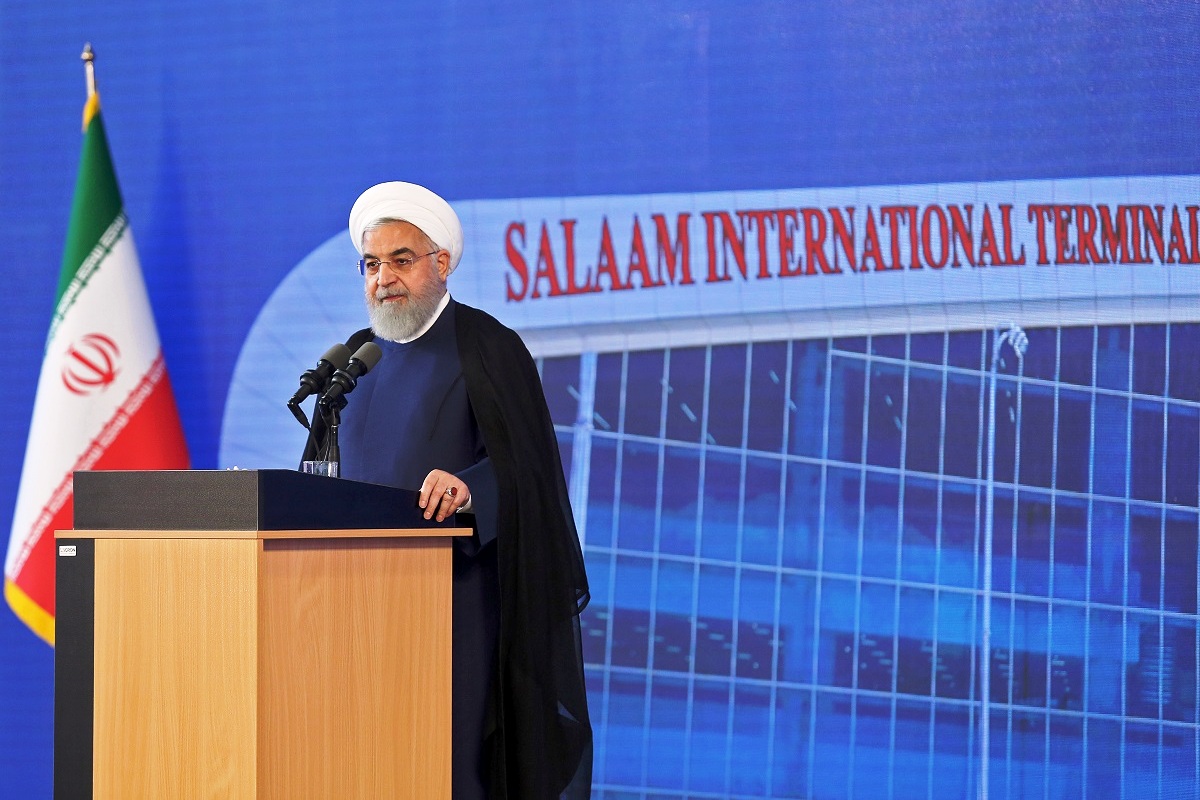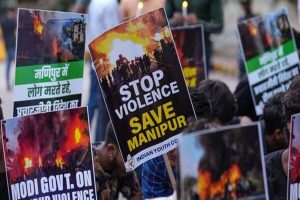There is little doubt that American hostility against Iran has grown beyond measure. The US objective is to cut Iran off from the global economy. Its belligerence is pushing Iran to the brink, because EU cannot be expected to bend over backwards to support Iran and risk sacrificing the valuable US market for its exports.
The USA believes that economic pressure would topple the regime of the mullahs without realizing that it would only fortify their stranglehold. The mullahs are not scared of war, chaos or mayhem; all these will ultimately help reinforce their grip on power.
Advertisement
This is precisely what Mr. Rouhani has all along been fighting against. Geography has blessed Iran in several ways, and this explains why it is not scared to take on the might of the USA or even the entire western world. Iran is a mountainous country which severely restricts the habitable space for its 82 million population; this forces many to live in the inhospitable mountains.
The same impregnable mountains have historically provided Iran with security against foreign invasion. Of its two major mountain ranges, the Zagros runs from the north, along Iran’s border with Turkey and Iraq, its rivals since ancient times, and curves southwards stretching almost up to the Strait of Hormuz in the Persian Gulf, where the Shatt-al- Arab waterway marks the border between Iran and Iraq for about 70 kilometres of swamp-ridden plains.
The Shatt Al-Arab emerges out of the confluence of the Tigris and Euphrates in Iraq, joined later by the Karun river flowing from Iran. This frontier zone has immense economic and strategic significance for both Iran and Iraq . Two of Iran’s main oil terminals and cargo ports, Abadan and Khorramshahr, are situated on this waterway and the Shatt constitutes Iraq’s only maritime outlet to the Persian Gulf and the Arabian Sea.
Shatt-al-Arab has been a major bone of contention between the two countries. The other mountain range of Iran, the Elburz, also runs from the north, along Iran’s border with Armenia and Turkmenistan, and stretches up to Afghanistan’s border covering the entire southern shores of the Caspian Sea and providing Iran with an excellent vantage point against any sea-borne invasion.
Iran is also buffered by many countries against major powers; Georgia, Armenia, Azerbaijan and Turkmenistan serve as buffer countries between Iran and Russia, while Afghanistan serves as a buffer between Iran and China. Iran is perhaps the only stable country in the entire region ~ to its east, both Afghanistan and Pakistan are in almost relentless turmoil, while to the west, Iraq lies in a mess.
Beyond Iraq, the Arab states are too divided and too small; besides their populations are also much smaller compared to Iran’s. Iraq has a population of only 40 million compared to Iran’s 82 million, 90 per cent of whom are Shi’ites, while the next most populous country Saudi Arabia ~ regional rival of Iran ~ has a population of about 34 million only, others have still less.
None of these countries can easily take on the military might of Iran. Iran is thus protected by its geography, with mountains on three sides and swamp and water on the fourth. The mountainous terrains make offensive military operations very difficult, if not impossible. Barring a surprise Anglo- Soviet invasion and occupation during World War II on an unprepared and neutral Iran for securing the supply lines of the Allied Forces, the last time Iran was invaded by an enemy was in the early thirteenth century, when the Mongols invaded Persia during 1219 -21 AD.
The major war Iran had to fight since World War II was with its neighbouring Iraq, over control of the Shatt-al-Arab waterway. Taking advantage of the chaos in post-revolution Iran, Iraq under Saddam Hussein wanted to replace Iran as the dominant Persian Gulf state, and also to preclude any possibility of the Iranian Revolution spilling across the border into Iraq and inspiring Iraq’s Shi’ite majority to rebel against the Ba’athist government under Saddam.
Iraq also wanted to annex Iran’s oilrich Khuzestan province on the border and establish control over the Shatt al-Arab waterway. The war which raged from 1980 to 1988 cost at least half a million lives on both sides, and an equal number of the injured and the displaced, without giving victory or territorial gains to either side. The US forces knew better than to invade Iran; as Tim Marshall tells us in his Prisoner of Geography, at the time of the Gulf War in 2003, the catchphrase in US military was, “We do deserts, not mountains”. Mountains not only protect, but also bring their curses.
The difficult terrain divides Iran into many groups with strong local identities, Arabs, Kurds, Turkmens, Ajeris, Georgians, Armenians, etc., besides hindering the development of an integrated, interconnected economy. The Shi’ite Iran creates a sense of insecurity and mistrust among the neighbouring Arab countries which are predominantly Sunni, especially Saudi Arabia.
Geography favours Iran’s emergence as a regional superpower, and its nuclear industry arouses deep suspicion and fear not only among its neighbours, but also in Israel and the entire western world. Yet the world would think many a time before striking Iran militarily, because Iran has an ultimate trump card ~ the Strait of Hormuz over which it exercises absolute control. About 20 per cent of the world’s oil ~ 45 per cent of all seaborne oil ~ transits through the Strait, from the entire Arab world, Iraq and Iran.
At its narrowest point, the strait is only 21 kilometers wide, and at the widest only 95 kilometres. Iran can close it at any moment, by mining the Strait and making it impossible for ships to pass, or use anti-ship missiles to keep the Strait unnavigable for months on end, choking the oil supplies of the world, and spiralling world oil prices to precipitate a severe economic crisis.
Similarly, Israel despite all its muscle flexing, will not readily attempt any preemptive air strike on Iran’s nuclear facilities which are spread widely throughout the country; it also lacks “the military might to shape the geopolitical alignments in the Persian Gulf region”, as George Friedman said in The Next Decade. Iran has allies in Shiadominated government Iraq, Alwaites in Syria and Hezbollah, the de facto state in Lebanon, and supports Houthi insurgents in Yemen.
Iran’s influence thus extends right up to the Mediterranean, like in the ancient times when its empire had stretched from Egypt to the western border of India. “Iran has brilliantly erected a post-modern military empire, the first of its kind: one without colonies and without the tanks, armour, and aircraft carriers that have been the usual accompaniments of power”, Robert Kaplan wrote in The Revenge of Geography. Iran has become a superpower in the Middle East, not through invasion and occupation, but partly through the blessings of geography, and partly through a cleverly crafted strategy in which apart from its proxy warfare and nuclear weapons programme, the appeal to religious fundamentalism played no small part.
Iran enjoys considerable heft in the Arab world. With its rich culture, vast territory and ancient history, with its youthful population and sprawling cities, it is what Kaplan calls a “universe in itself”, like China or India. Religion and corruption today are impeding its immense developmental potential, but once religion is forced to let go of its suffocating controls, it is likely to be a liberal Iran, as in the past.
“Iran has been less a state than an amorphous, multinational empire”, writes Kaplan. “It is this amorphousness that Iran could return to as the wave of Islamic extremism and the perceived legitimacy of the mullahs’ regime erodes.” But before that happens, there are many bridges to cross, and the Gulf waters are turning increasingly murkier.
(Concluded)
(The writer is a commentator. Opinions are personal)











